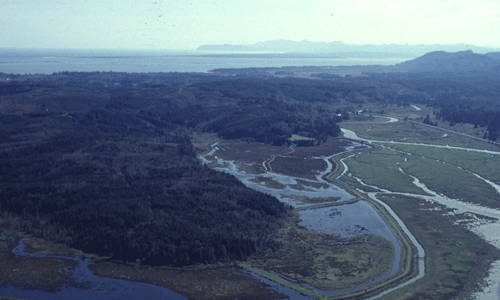Willapa Bay National Wildlife Refuge Projects
Willapa Bay is one of the most important staging and wintering areas for migratory birds on the West Coast. Habitat types include estuarine intertidal emergent wetlands, estuarine mudflats, freshwater emergent wetlands, forested wetlands, sand dunes, sand beaches and grasslands. These habitats have historically supported large numbers of migratory waterfowl, shorebirds, anadromous fish and many other species of fish and wildlife. Hundreds of thousands of waterfowl use Willapa Bay habitats including trumpeter swans, northern pintails, mallards, American wigeon, lesser scaup, scoters and canvasbacks.
 |
| Willapa Bay National Wildlife Refuge |
Ducks Unlimited constructed two fish passable water control structures on the Lewis and Porter Point units of the Willapa Bay NWR, enhancing 300 acres of palustrine emergent marsh.
 |
| Construction of water control structures |
These new structures will allow water management activities (moist soil managment) for the fresh water wetlands, as well as safe passage for species such as sea run cutthroat, chum and coho salmon to stream habitat located above these wetlands. This will provide critical wintering habitat for waterfowl, as well as access to spawning and rearing habitat for several species of fish.
This project was a cooperative effort between Ducks Unlimited, the US Fish and Wildlife Service, the Willapa Bay Fisheries Enhancement Group, and the US Forest Service.
Ducks Unlimited uses cookies to enhance your browsing experience, optimize site functionality, analyze traffic, and deliver personalized advertising through third parties. By continuing to use this site, you agree to our use of cookies. View Privacy Policy